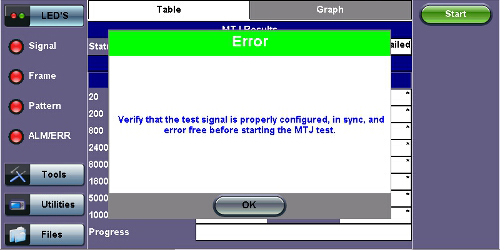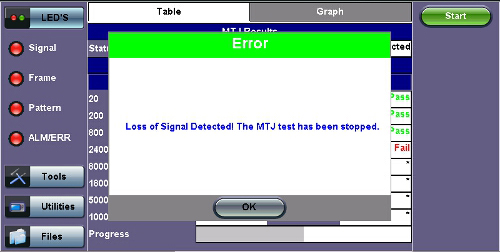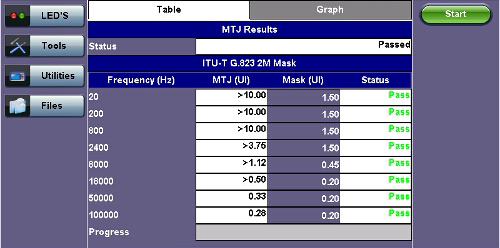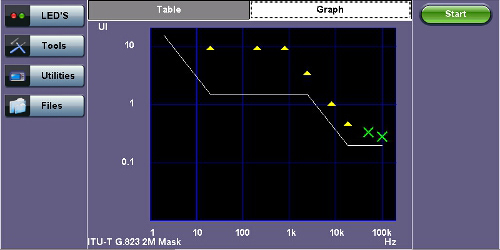Max Jitter Tolerance (MTJ)
Jitter Tolerance or jitter accommodation is defined in terms of the sinusoidal jitter amplitude which causes a designated error when applied to digital equipment input. Jitter tolerance is a function of applied jitter's amplitude and frequency. Equipment must pass the lower limit of maximum jitter tolerance, which is specified in ITU-T G.823, G.824, and G.825 standards.
The unit will transmit jitter from point-to-point or low to high frequency at different amplitudes to determine where errors occur. This is known as maximum jitter tolerance (MTJ).
Defects and Anomalies Check
The Max Jitter Tolerance feature checks the health of the incoming signal prior to starting the test. If any alarms or errors are detected, the test set will notify the user that the test cannot be performed and present configuration suggestions to correct the problem.

Error Message: Configuration Suggestions
Loss of Signal (LOS) Check
If the LOS condition is detected at any time during the MTJ test, the data will become invalid and the test will stop automatically. An error message will appear to notify the user to correct the condition before running the test again.

LOS Error Message
Table
Table values include:
-
Frequency tested (Hz).
-
MTJ (UI): Maximum Tolerable Jitter (in Unit Intervals).
-
Mask (UI): Peak-to-Peak jitter limit (in UI) as defined by ITU standard. This is the minimum jitter value to pass (i.e., the MTJ value must exceed the Mask value for the data point to pass).
-
Status: Pass/Fail status.
-
Start/Stop: Starts or stops the test.
-
Progress: A green bar at the bottom of the graph shows the test progress.

MTJ Table
Graph
A cross (x) indicates the maximum jitter value tolerated at the frequency.
Yellow triangles (▲) indicate that the data point is greater than, while the green "X" symbols represent actual measured values. Greater than implies that the jitter tolerance of the DUT (device under test) is much better than the value measured by the test set. Users should expect all data points above the mask (curve) to pass. For this example, the table results and graphical example confirm that all points have passed.

Graph